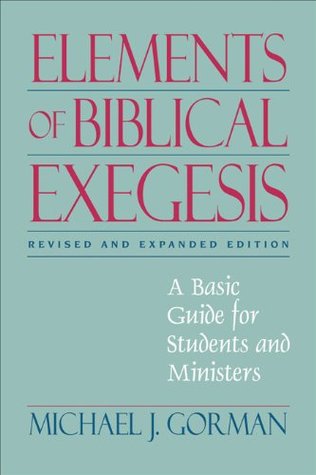This approach looks only at the final form of the text, the text as it stands in the Bible as we have it. It is not interested in the “long view” or “prehistory” of the text—any oral traditions, earlier versions, or possible written sources (such as the hypothetical sources called J, E, D, and P in the Pentateuch or Q in the gospels4).
Welcome back. Just a moment while we sign you in to your Goodreads account.


